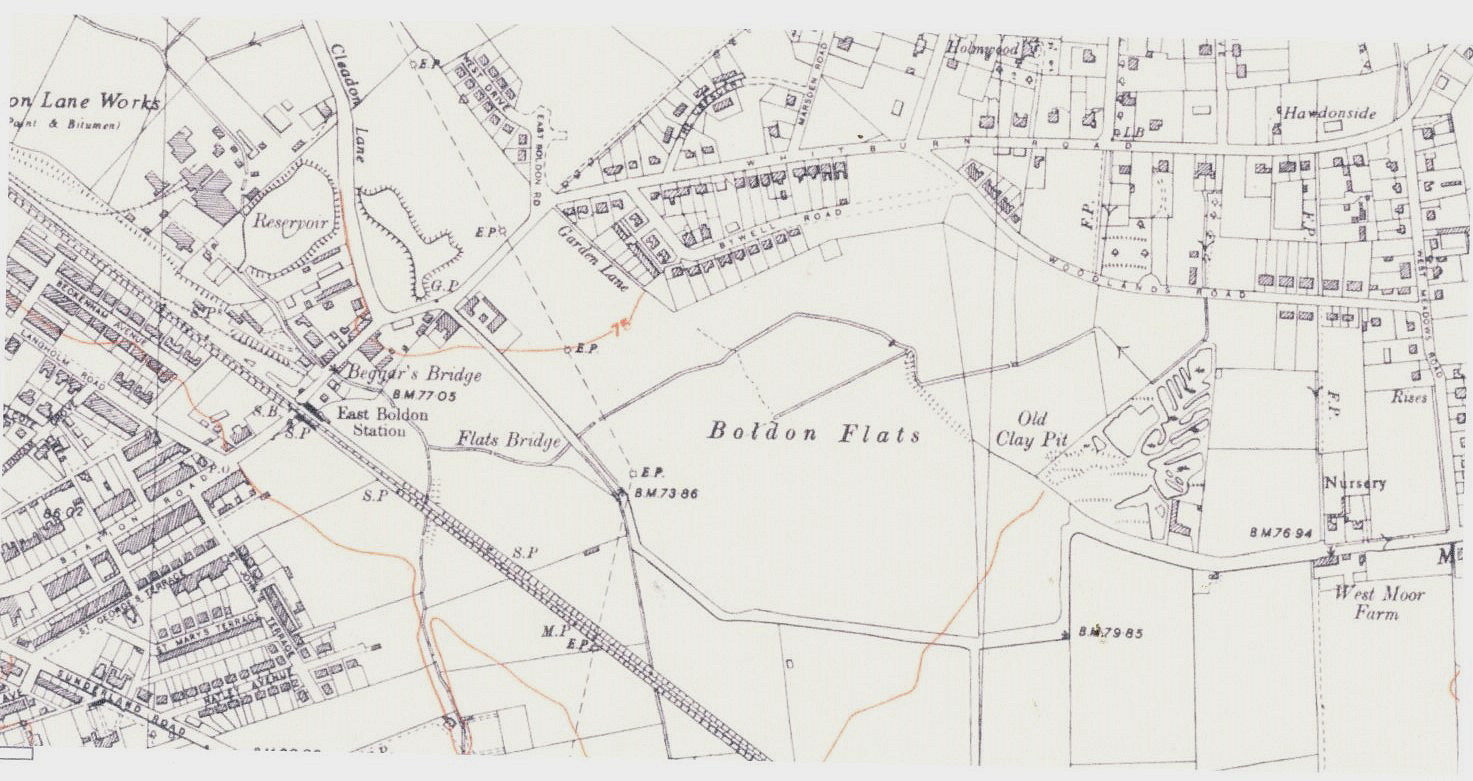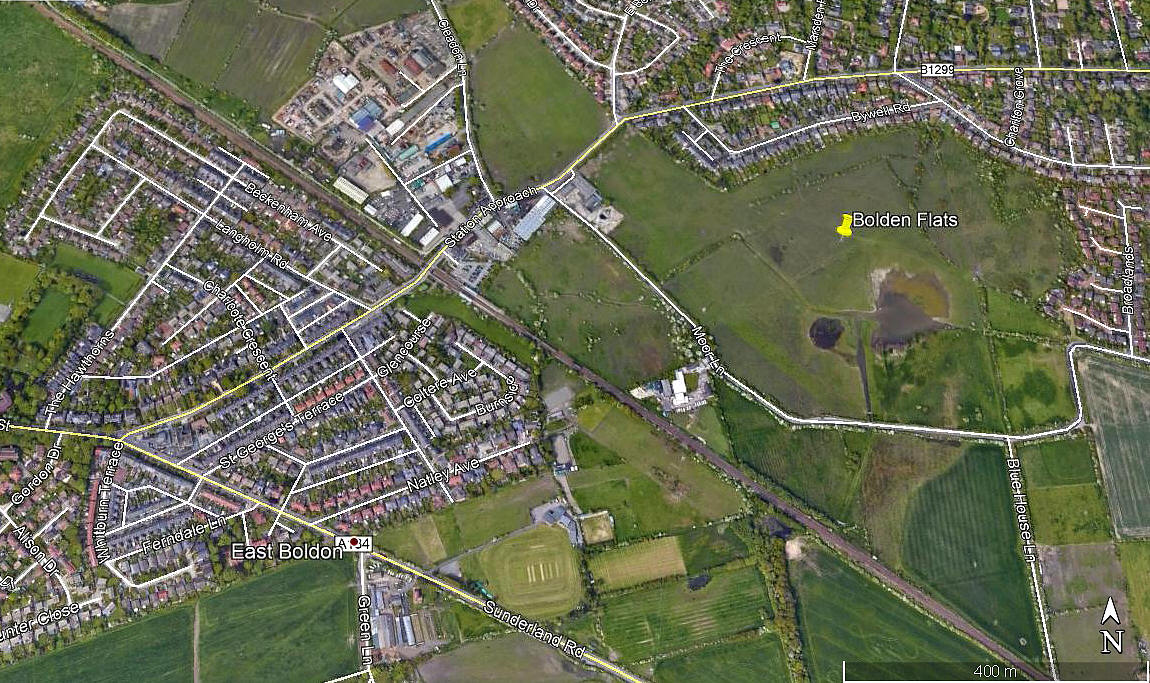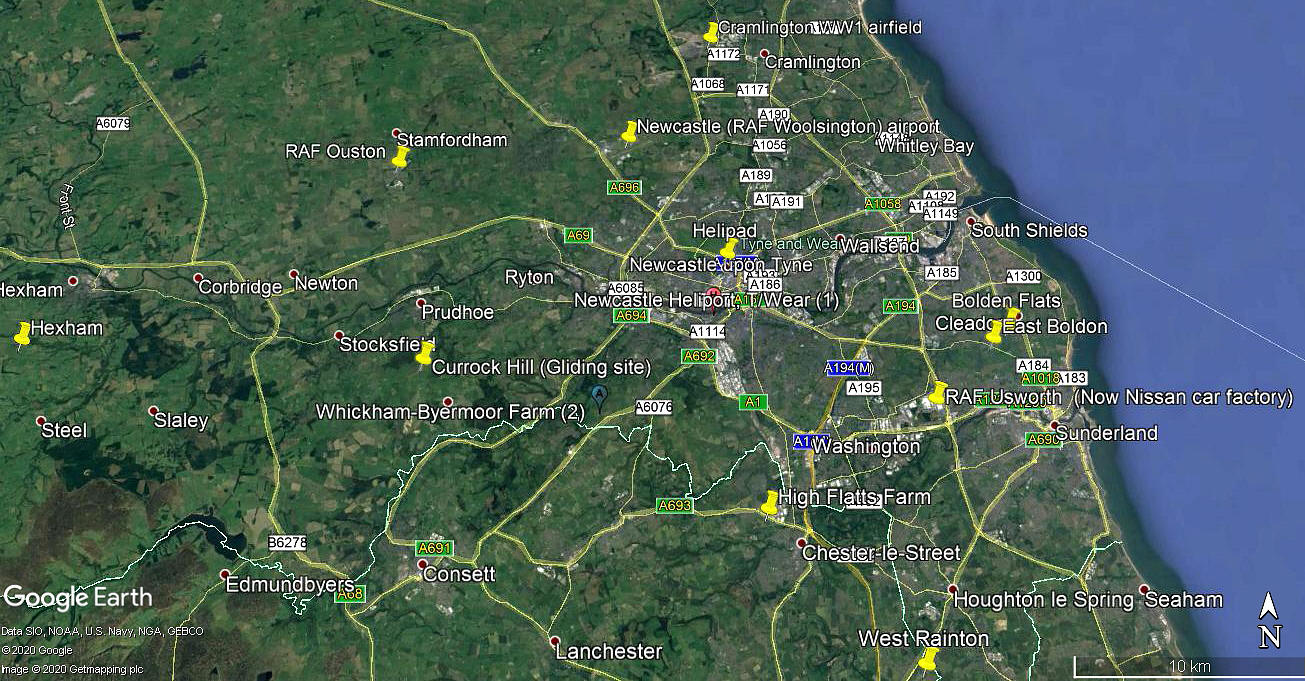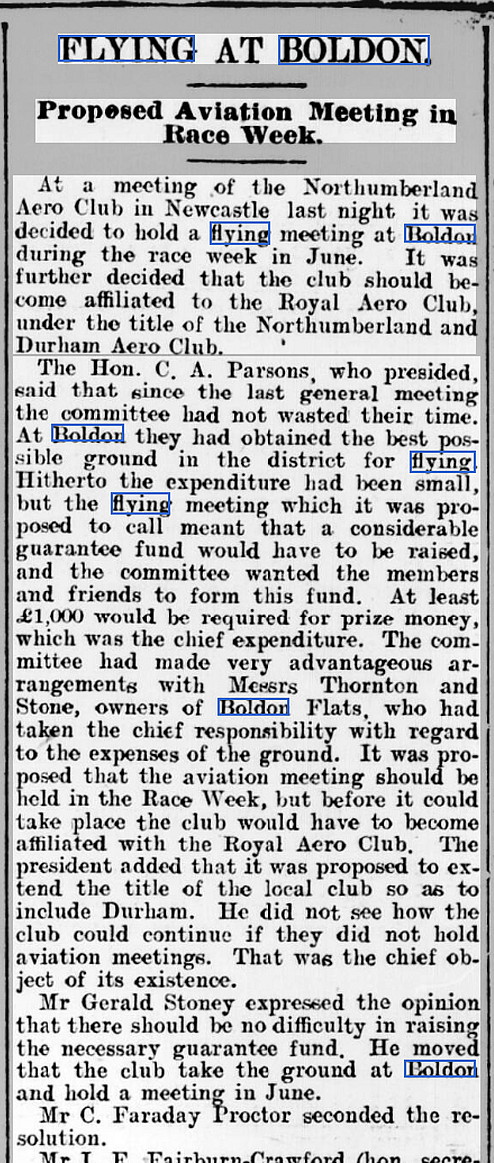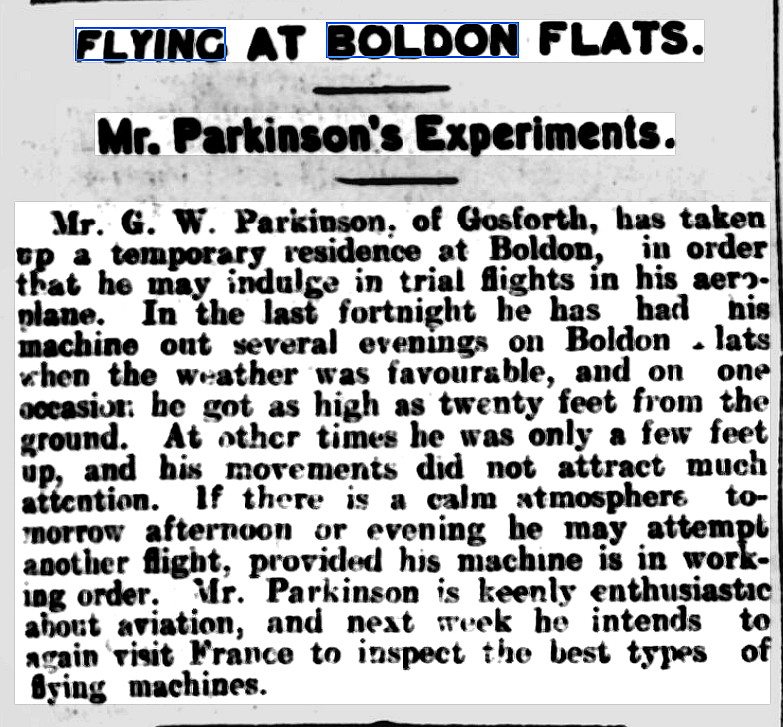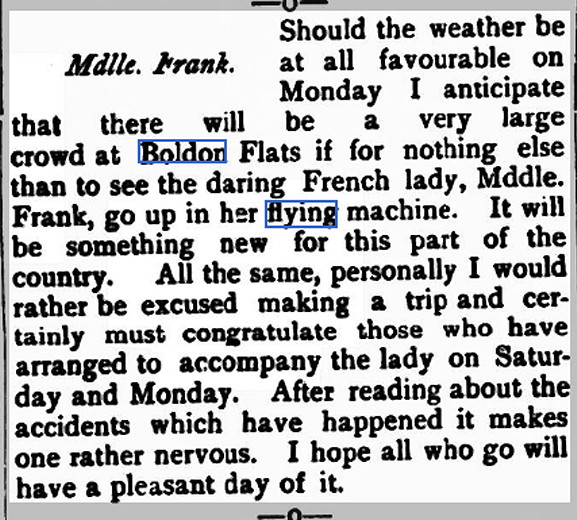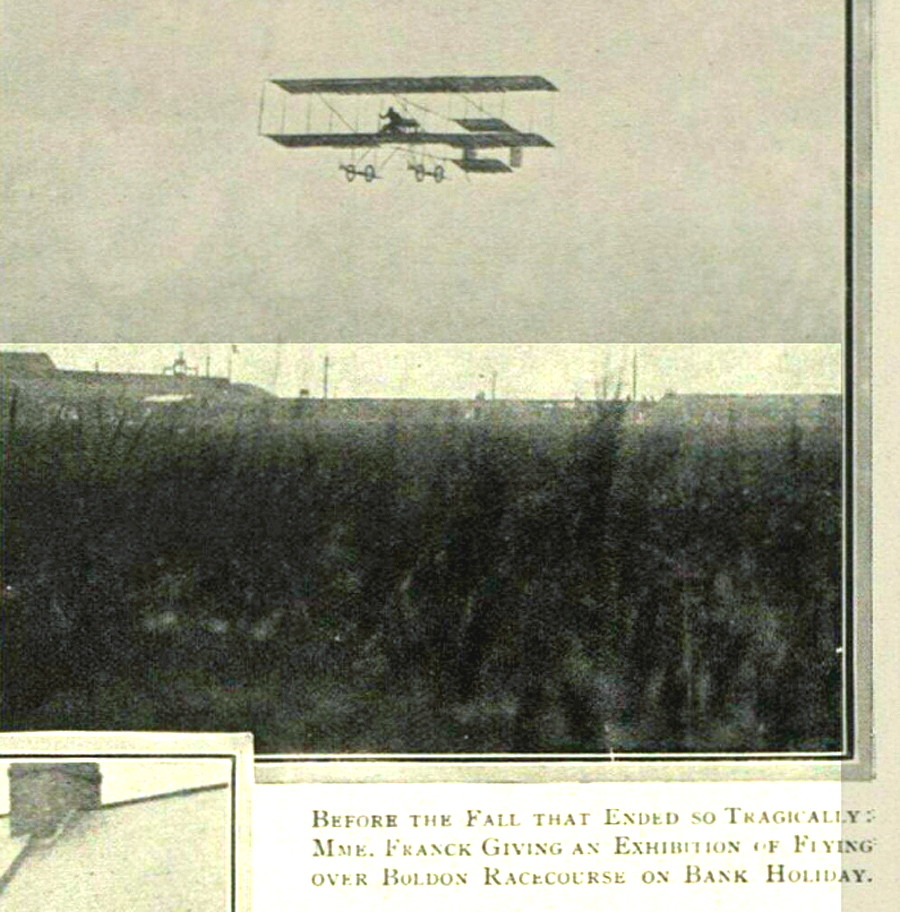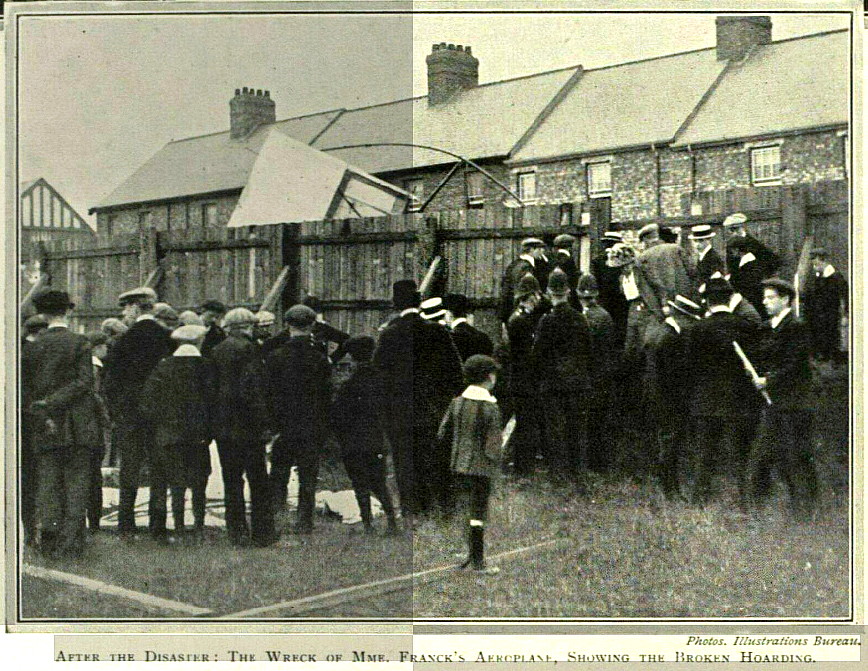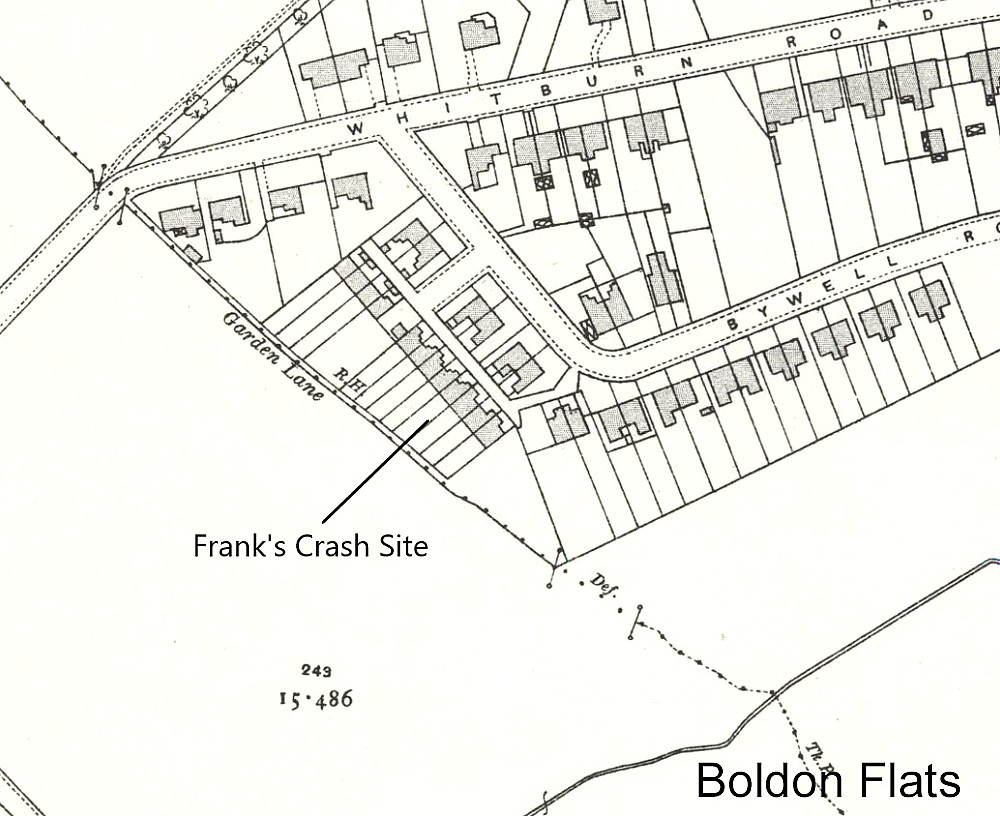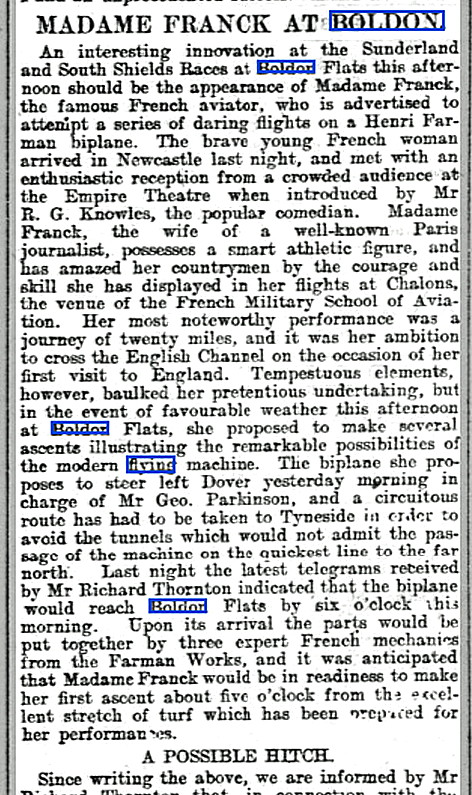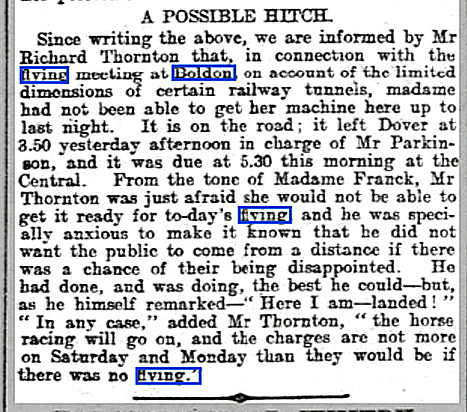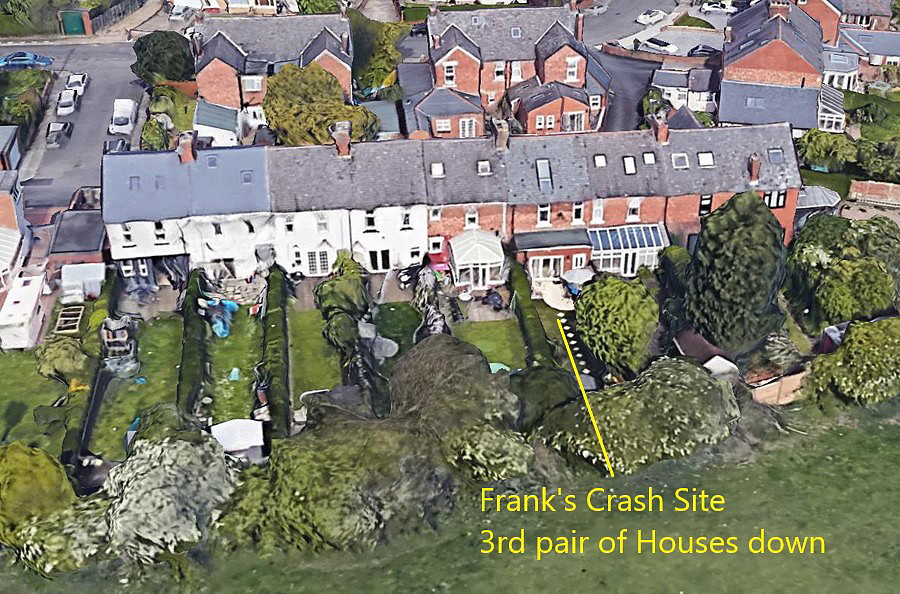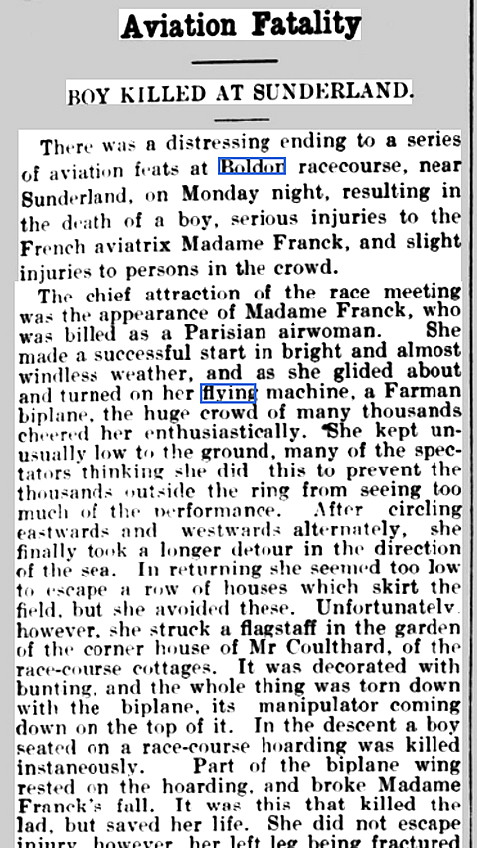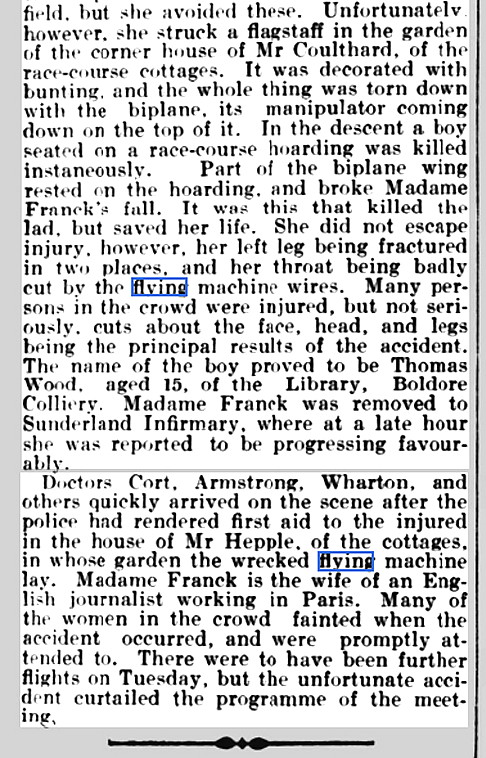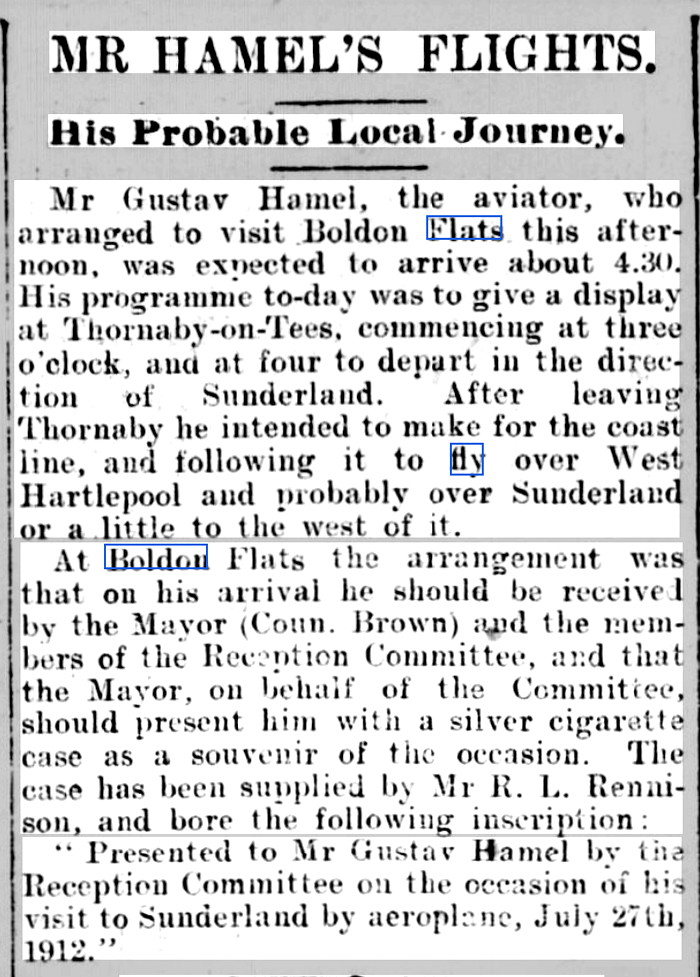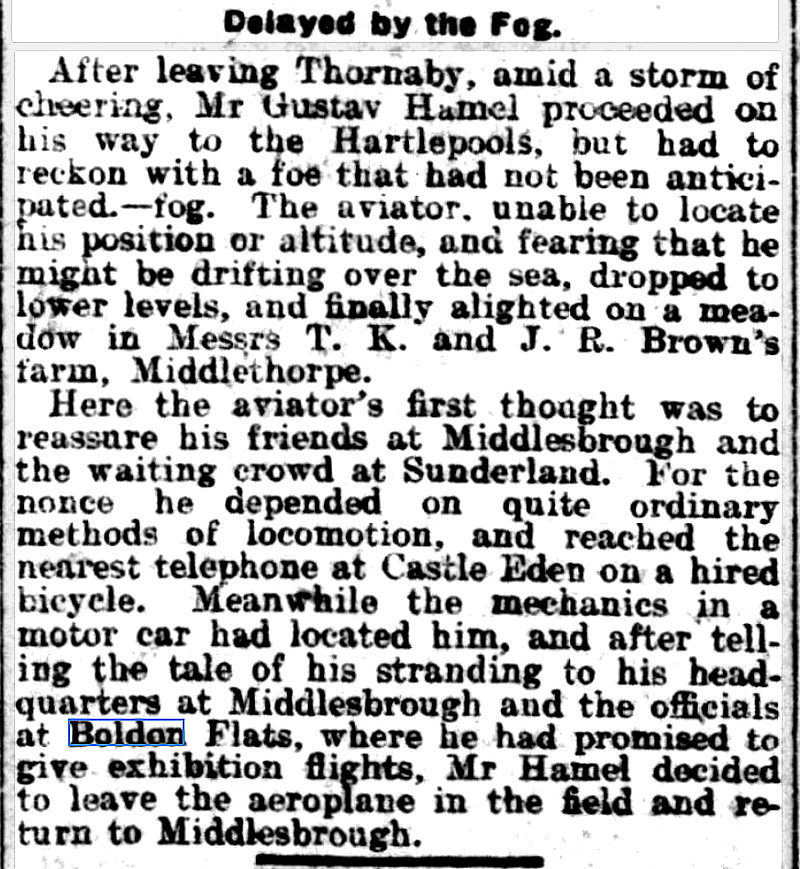Boldon Flats
BOLDON FLATS: Temporary flying ground(s)
Note: I have Mr Michael T Holder to thank for providing the map.
The second and third pictures were obtained from Google Earth ©
Location: Just E of East Boldon railway station. Roughly 7nm E to ESE of Gateshead town centre
NOTES: Ron Smith in his book British Built Aircraft Vol.5 states that; “The Welford monoplane, built at Mansion House, North Hylton, Sunderland, was flown here in May 1910.”
However, he states that the site was in NORTHUMBERLAND. In 2010 I discovered a map of ‘Historic Counties of Great Britain and N. Ireland’ published by Quadhurst Maps and they claim, “Our traditional, historic counties have never affected, (My note: Shouldn’t this read “been affected by” or similar?), nor the boundaries changed by the endless shifting of local government boundaries over the past 100 years but have remained constant – contrary to popular belief.”
In which case BOLDON was in COUNTY DURHAM. This does not in any way to criticise Ron Smith; the incessant changes of ‘false’ boundaries by local and County authorities have plagued my desire to place a site in its correct historical geographical location. These sites are now in TYNE & WEAR.
SOME HISTORY OF FLYING AT BOLDON FLATS - A MICHAEL T HOLDER GALLERY
Mike Holder, who is a great friend of this 'Guide', has done some research into the history of this location, and has found some very interesting results.
Note: The first proof he found was in this article published in the Sunderland Daily Echo and Shipping Gazette on the 14th May 1910, regarding a planned 'Flying Event' in June. The second item, published in the Newcastle Evening Chronicle on the 10th June 1910, appears to have no connection to a 'Flying Event' as such, but more in the nature of experiments being conducted by a Mr Parkinson.
THE ARRIVAL OF MADAME ROSALIND MATHILDE FRANCK
In August 1910 Madame Franck, the French aviator who had learnt to fly at the Farman school near Paris, having abandoned her proposal to fly across the English Channel, decided instead to visit this venue. (Her name was also spelt Francs and Frank in England). Sadly she had a very bad crash, killing a young lad and being seriously injured herself.
Note: The first item was published in the Jarrow Express on the 29th July 1910. The second and fourth items are pictures published in the Illustrated London News of the 6th August 1910, and is clearly a rather crude composite, which was common practice in those days. The fourth showing the crash site. The third item was published, also in the Jarrow Express, but on the 6th August 1910.
Note: The article, divided into two parts to make it easier to read, was published in the Newcastle Journal on the 30th July 1910.
Note: This article, also divided into two parts for ease of reading, was published in the Banffshire Advertiser on the 4th August 1910. Today we need to remember that little was known about aircraft actually fly - it was very much a case of careful experiments - and usually these were conducted early in the morning or in the evening when calm conditions prevailed.
Those early machines had a very limited performance envelope, being very draggy, and with unreliable engines of limited power. The 'gap' between flying and stalling often being around 10mph or so - and the pilot had no airspeed indicator.
HAMEL ARRIVES!
Note: The first article was published in the Sunderland Daily Echo and Shipping Gazette on the 27th July 1912. The second being published in the Stockton Herald, South Durham and Cleveland Advertiser on the 3rd August 1912. From the earliest days aviators were regarded as heroes, but pretty soon some had achieved 'super star' status, and Gustav Hamel was most certainly a leader in this respect.
A handsome chap, he had an entourage of female fans, (what we'd call 'groupies' today), following him around the country. And, everywhere he went he had huge crowds assembling to watch his displays. Sadly he died on the 23rd May 1914, over the English Channel, whilst ferrying a new aeroplane back from France. His body was never recovered, although French fishermen did find his remains floating, and from their description of the clothing, it was said that they had indeed found him.
SOMETHING TO BE SORTED OUT
In April 2018 I was kindly contacted by Alan Cummings (see 'Comment' below) and also his 'Comment' for the entry for 'South Shields flying sites'. He informs me that the South Shields venue for Sir Alan Cobham's 1929 Municipal Aerodrome Campaign was BOLDON FLATS.
South Shields was indeed the planned 94th venue for this tour. Starting in May and ending in October, one hundred and seven venues were intended to be visited. Mostly in England two were on Wales and seven in Scotland. Without any doubt this tour encouraged the creation of several aerodromes/regional airports - but not in South Shields. Cobham had a couple of crashes along the way, but still managed to visit about 95 venues. In itself a quite remarkable achievement.
The aircraft Cobham mostly used for this Tour was the ten-seater DH.61 'Giant Moth' G-AAEV, named 'Youth of Britain'. The punishing schedule he set himself seems astonishing today - see STOCKTON-on-TEES for more information. Highly recommended reading are his memoirs in 'A Time To Fly'.
However, he never made it to BOLDON FLATS in 1929. He did however, with his National Aviation Displays tours, use HOLDER HOUSE FARM, Boldon Lane near Cleadon on the 3rd October 1932, and WEST FARM, East Bolden on the 29th July 1935.
Alan Cummings
This comment was written on: 2018-04-10 18:44:11I live on part of Boldon Flats, an estate called Broadlands. The Flats are a protected nature reserve these days and house wetland birds for much of the year. The Flats were in Co Durham as they are north of Sunderland and south of South Shields - and between Cleadon and Boldon. The road through the Flats is Moor Lane. These days it is in Tyne & Wear.
Carole Downs
This comment was written on: 2021-03-28 14:10:23Hi, I would to know more about the flights of Sir Alan Coburn in Boldon. My mam was on a flight after winning a competition in a local newspaper. Any info would be appreciated.
Dick Flute
This comment was written on: 2021-03-28 20:15:41Hi Carole, typically on his 1929 Tour, Sir Alan Cobham would, at each venue, take typically forty to fifty school children for a flight. The cost of these was met by an anonymous donor, who we now know was Lord Wakefield of Castrol Oil fame. Best regards, Dick
We'd love to hear from you, so please scroll down to leave a comment!
Leave a comment ...
Copyright (c) UK Airfield Guide















